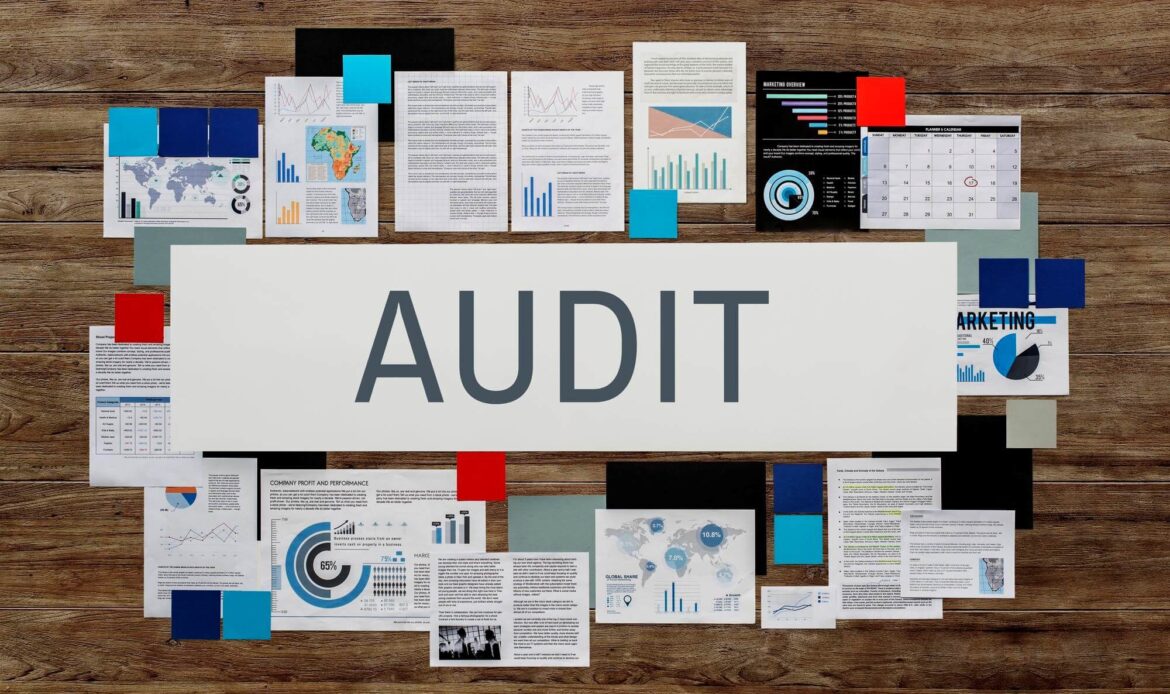In a world where digital transformation dictates the pace of progress, businesses must maintain a strong grasp of their IT resources. One of the most strategic ways to achieve this is through regular IT asset auditing. In 2025, where remote work, data security, and compliance are top priorities, IT asset audits are more than just checklists — they are crucial for business success. Companies across all industries are realizing that understanding and managing their IT assets is key to making smarter decisions, protecting sensitive data, and optimizing costs. This article explores in-depth the top five benefits that IT asset auditing offers to companies of all sizes.
Table of Contents
1. Enhanced Data Security and Risk Mitigation
One of the most significant advantages of IT asset auditing is improved data security. As cyber threats become increasingly sophisticated, organizations face growing risks related to data breaches, malware, ransomware, and internal threats. Every device or software application connected to your network represents a potential entry point for hackers. An unmanaged or outdated asset is a weak link in your security chain.
An IT asset audit helps organizations identify and assess every asset within the IT ecosystem — from workstations and servers to mobile devices and software applications. By documenting and reviewing this inventory, companies can quickly detect unauthorized or obsolete devices and software that could pose security threats. For instance, a forgotten laptop still connected to the network could store sensitive client data or serve as an open door for malware.
Furthermore, an audit allows businesses to track where and how sensitive data is stored. This is especially important in regulated industries like healthcare, finance, and education. A thorough understanding of data flow across systems enables IT teams to establish stronger access controls, encryption protocols, and endpoint protection strategies. In addition, asset audits help identify users and devices with elevated privileges, ensuring they are appropriate and monitored.
Regular auditing also supports proactive patch management. Knowing what hardware and software is in use allows IT teams to deploy security updates and patches swiftly, reducing exposure to known vulnerabilities. In essence, IT asset auditing forms the foundation of an organization’s cybersecurity strategy, supporting both prevention and incident response.
2. Better Financial Management and Cost Savings
IT infrastructure is often one of the most significant areas of investment for modern organizations. Without a clear understanding of what assets are owned, how they are used, and where inefficiencies lie, companies risk wasting valuable resources. IT asset auditing provide clarity that leads to more intelligent financial decisions.
For example, many businesses subscribe to multiple software licenses without using them efficiently. An audit can identify underutilized licenses, duplicate purchases, and legacy applications no longer in use. Canceling or consolidating these resources can result in substantial cost savings. Additionally, companies can avoid costly penalties for software non-compliance by ensuring all software in use is properly licensed.
Hardware optimization is another area where savings can be realized. An audit might reveal that certain departments are operating with outdated equipment that frequently breaks down or consumes excessive energy. Replacing or reassigning such assets can lead to reduced downtime, lower maintenance costs, and improved productivity.
Beyond immediate savings, IT asset auditing help organizations plan future purchases more effectively. By analyzing usage patterns, lifecycle data, and historical performance, businesses can anticipate when assets will need to be upgraded or replaced, reducing the chances of emergency spending or overbuying. With well-documented asset data, procurement decisions are based on actual needs rather than guesswork.
3. Improved Decision-Making and Strategic Planning
Technology is not just a support function — it is a core enabler of business success. Effective decision-making relies on having accurate, up-to-date information, and IT asset auditing deliver exactly that. A detailed inventory of assets helps leaders align technology investments with business goals, enhance operational efficiency, and drive innovation.
With a clear understanding of asset utilization, performance trends, and support requirements, executives can identify opportunities to consolidate systems, automate manual processes, or integrate new technologies. For instance, a company may realize that shifting certain workloads to the cloud would reduce dependency on aging hardware and improve scalability.
IT asset data is also invaluable during mergers and acquisitions. Auditing assets before and after integration helps determine redundancies, evaluate compatibility, and prioritize investments. It also supports smooth transitions by ensuring that all systems are secure, functional, and aligned with strategic objectives.
Additionally, in today’s remote and hybrid work environments, decision-makers must account for new challenges in managing distributed IT assets. Asset audits provide visibility into remote devices, mobile access points, and software usage across geographic locations. This ensures that remote employees have the right tools while maintaining centralized control and oversight.
Strategic planning becomes more agile and data-driven with the insights gained from audits. Organizations can track the total cost of ownership (TCO) for assets, forecast technology refresh cycles, and identify performance bottlenecks. By integrating asset audit data into business intelligence systems, leaders can make more informed decisions that improve agility and competitiveness.
4. Regulatory Compliance and Audit Preparedness
Regulatory compliance is no longer optional. From data protection regulations like the General Data Protection Regulation (GDPR) in the EU to industry-specific mandates such as HIPAA in healthcare and SOX in finance, businesses are required to maintain strict control over their IT environments. Failure to comply can result in financial penalties, legal consequences, and reputational damage.
IT asset auditing support compliance by ensuring accurate documentation of all assets, their configurations, and their users. This level of transparency allows organizations to demonstrate compliance during internal and external audits. Audits also help organizations implement data classification policies, ensuring that sensitive information is handled according to legal requirements.
In addition, regular auditing helps organizations stay on top of software licensing compliance. Many companies face fines for inadvertently violating licensing agreements. An asset audit provides a comprehensive view of what software is installed versus what is licensed, helping IT teams take corrective action as needed.
In regulated industries, being audit-ready is a continuous requirement. A well-documented IT asset management system simplifies it asset auditing preparation, reduces the stress and time involved, and increases confidence in passing regulatory reviews. It also enables companies to respond swiftly to data subject access requests (DSARs), breach notifications, and compliance checks.
Read More: Why E-Waste Disposal Matters
5. Efficient IT Operations and Support
Efficient IT operations are critical to business continuity and user satisfaction. Without an accurate inventory of IT assets, support teams struggle to resolve issues promptly, manage updates, and plan maintenance. Asset audits provide the data needed to streamline support and ensure smooth day-to-day operations.
When IT support teams have access to up-to-date asset records, they can quickly identify the specifications, warranty status, and usage history of any device. This speeds up troubleshooting and allows for more personalized support. Furthermore, audits help standardize hardware and software across the organization, reducing complexity and improving compatibility.
Auditing also enhances asset allocation and lifecycle management. Organizations can ensure that new hires receive the necessary equipment, track asset movement between departments, and retire old devices efficiently. Automated asset tracking tools integrated with auditing processes allow for real-time updates, which are essential in dynamic environments.
In environments where downtime is costly — such as manufacturing, healthcare, or finance — proactive asset monitoring enabled by audits ensures that systems are running optimally. Predictive maintenance based on audit data helps prevent failures before they occur, minimizing disruptions and protecting business productivity.
In larger organizations with multiple locations, centralized asset management becomes essential. Regular IT asset auditing provide a unified view of all assets, facilitating better coordination and resource allocation across departments. This centralized approach leads to greater efficiency, accountability, and cost control.

Building a Culture of IT Asset Auditing Awareness
To fully realize the benefits of IT asset auditing, businesses should integrate auditing into their organizational culture. This involves training employees on the importance of asset tracking, promoting transparency in technology usage, and investing in robust IT asset management (ITAM) systems.
Employees should be encouraged to report changes in asset use, return unused devices, and follow best practices for software and hardware handling. Clear policies and automated workflows can support compliance and reduce manual errors.
Additionally, leveraging cloud-based ITAM platforms can simplify audit processes and improve visibility. These systems often include features like automatic discovery, reporting dashboards, and integration with helpdesk tools, making audits faster and more effective.
Conclusion: IT Asset Auditing as a Strategic Advantage
In 2025, IT asset auditing is no longer just a technical task for IT departments — it is a strategic tool that influences every aspect of business performance. From enhancing security and compliance to optimizing costs and supporting innovation, asset audits offer tangible benefits that drive business success.
Companies that prioritize regular auditing position themselves to adapt quickly to change, make smarter investments, and maintain strong governance over their digital assets. As technology continues to evolve, an accurate and up-to-date view of your IT landscape becomes not just helpful, but essential.
Whether you’re a startup scaling rapidly or an enterprise managing thousands of devices, investing in comprehensive IT asset auditing will empower your business to operate more securely, efficiently, and competitively in the digital age.



1 reply on “5 Best Benefits of IT Asset Auditing for Businesses”
[…] Read More: IT Asset Auditing for Businesses […]